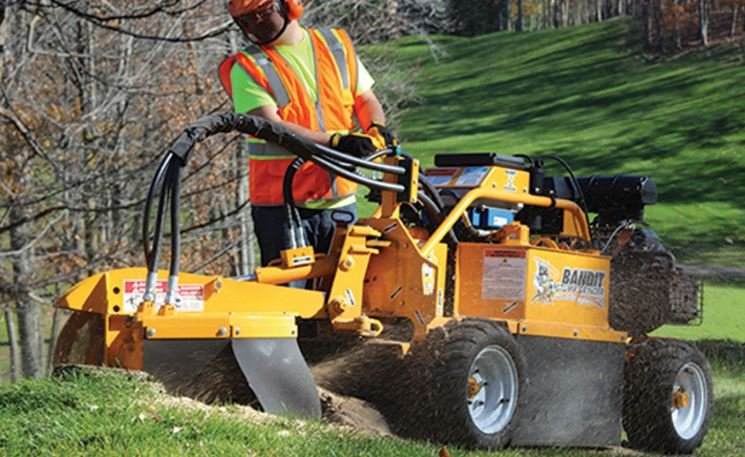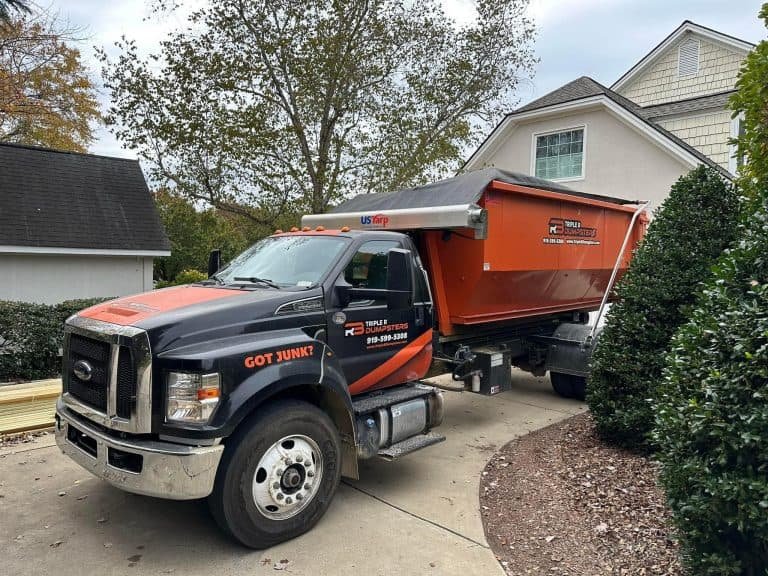Stump grinding is an essential process in landscaping and land management, aimed at removing unsightly tree stumps left behind after tree removal. These stubborn remnants not only pose safety hazards but also hinder the aesthetic appeal of outdoor spaces. This comprehensive guide delves into the world of stump grinders, shedding light on their functionality, benefits, and proper usage.
Importance Of Stump Removal
The presence of tree stumps in outdoor areas can lead to various hazards, including tripping accidents, pest infestations, and obstruction of landscaping activities. Removing stumps not only enhances the visual appeal of the landscape but also promotes safety and facilitates the growth of new vegetation.
Overview Of What The Article Will Cover
In this article, we’ll explore the mechanics of stump grinders, the different types available, their benefits, how to choose the right one, safety precautions, common mistakes to avoid, and environmental considerations associated with stump grinding.
What Is A Stump Grinder?
Stump grinders come in various shapes and sizes, but they all share the same basic function: to grind stumps and roots into small wood chips. These machines typically consist of a rotating cutting wheel or disc with carbide teeth that chew through the wood, breaking it down into manageable pieces.
Description Of A Stump Grinder
A typical stump grinder features a powerful engine, a cutting wheel, and a hydraulic system for maneuverability. The cutting wheel is positioned above the stump and is lowered onto it to begin the grinding process.
Components Of A Stump Grinder
The main components of a stump grinder include the engine, cutting wheel, hydraulic controls, and chassis. The engine provides the power needed to drive the cutting wheel, while the hydraulic system allows for precise control of the grinding operation.
Types Of Stump Grinders
Stump grinders are available in two primary configurations: wheeled and track-mounted. Wheeled stump grinders are more maneuverable and suitable for smaller stumps, while track-mounted grinders offer greater stability and traction, making them ideal for larger stumps and rough terrain.
How Does A Stump Grinder Work?
Stump grinding is a multi-step process that involves carefully positioning the grinder, lowering the cutting wheel onto the stump, and gradually grinding it down into small wood chips.
Step-By-Step Explanation Of The Grinding Process
The first step in stump grinding is to position the grinder next to the stump, ensuring that there is enough clearance for the cutting wheel to operate. Once in position, the cutting wheel is lowered onto the stump, and the grinding process begins. The operator moves the grinder back and forth over the stump, gradually reducing it to wood chips.
Safety Precautions When Operating A Stump Grinder
Operating a stump grinder can be hazardous if proper safety precautions are not followed. Operators should wear appropriate safety gear, including eye and ear protection, gloves, and steel-toed boots. It’s also essential to maintain a safe distance from the cutting wheel and to be aware of any potential hazards in the surrounding area.
Environmental Considerations
While stump grinding is generally considered to be an environmentally friendly method of stump removal, it’s essential to consider the impact of the process on the surrounding ecosystem. Proper disposal of stump grindings is crucial to prevent contamination of soil and water sources. Additionally, grinding stumps too deeply can disturb the soil and affect the health of nearby vegetation.
Benefits Of Using A Stump Grinder
Stump grinders offer several benefits over traditional stump removal methods, including safety, efficiency, and environmental friendliness.
Eliminates Safety Hazards
One of the primary benefits of stump grinding is that it eliminates safety hazards associated with tree stumps, such as tripping accidents and injuries from sharp protrusions. By grinding stumps below ground level, stump grinders create a smooth, hazard-free surface.
Enhances Aesthetics Of The Landscape
Removing unsightly tree stumps can significantly improve the aesthetic appeal of outdoor spaces. Whether in residential yards, public parks, or commercial properties, a well-maintained landscape free of tree stumps is more visually pleasing and inviting.
Prevents Regrowth Of Unwanted Vegetation
In addition to removing visible tree stumps, stump grinding also eliminates the root system below ground, preventing the regrowth of unwanted vegetation. This ensures that the area remains clear and can be used for other landscaping purposes without the risk of new tree growth.
Allows For Efficient Land Use
By eliminating tree stumps and roots, stump grinding creates additional usable space in outdoor areas. This reclaimed space can be utilized for new landscaping features, such as gardens, patios, or recreational areas, maximizing the potential of the landscape.
Choosing The Right Stump Grinder
Selecting the right stump grinder for the job requires careful consideration of several factors, including the size of stumps, frequency of use, and budget constraints.
Factors To Consider
When choosing a stump grinder, it’s essential to consider the size and number of stumps you’ll be grinding, as well as how often you’ll be using the machine. Additionally, budget constraints may influence your decision, as larger and more powerful stump grinders tend to be more expensive to purchase or rent.
Comparison Of Different Models And Brands
There are numerous stump grinder models and brands available on the market, each with its own unique features and capabilities. Comparing different models and brands can help you find the best stump grinder for your specific needs and budget.
Tips For Renting Or Buying A Stump Grinder
Whether you’re renting or buying a stump grinder, there are several factors to consider to ensure that you get the most value for your investment. Renting may be a more cost-effective option for occasional use, while purchasing may be more economical in the long run for frequent or ongoing projects.
How To Use A Stump Grinder Safely And Effectively
Using a stump grinder safely and effectively requires proper preparation, operation, and post-grinding cleanup.
Preparing The Work Area
Before using a stump grinder, it’s essential to prepare the work area by removing any obstacles, such as rocks or debris, that could interfere with the grinding process. Marking the location of underground utilities and ensuring adequate clearance around the stump are also crucial steps in preparing the work area.
Operating The Stump Grinder
When operating a stump grinder, it’s important to follow manufacturer’s instructions and safety guidelines carefully. This includes wearing appropriate safety gear, maintaining a safe distance from the cutting wheel, and using proper grinding techniques to achieve the desired results.
Post-Grinding Cleanup And Maintenance
Once the stump has been ground down to below ground level, it’s important to remove any remaining wood chips and debris from the area. Proper cleanup ensures a clean and safe work environment and helps prevent potential hazards. Additionally, regular maintenance of the stump grinder, such as sharpening the cutting teeth and checking hydraulic fluid levels, is essential to ensure optimal performance and longevity of the equipment.
Conclusion:
Stump grinders offer a convenient and effective solution for removing tree stumps and roots from outdoor spaces. By understanding how stump grinders work, following safety precautions, and considering environmental factors, you can make the most of this versatile equipment. Whether you’re a homeowner looking to spruce up your yard or a professional landscaper tackling larger projects, incorporating stump grinding into your routine can enhance the aesthetics and safety of outdoor environments. So, next time you encounter a stubborn tree stump, remember the wonders of stump grinders and the transformative power they hold.



